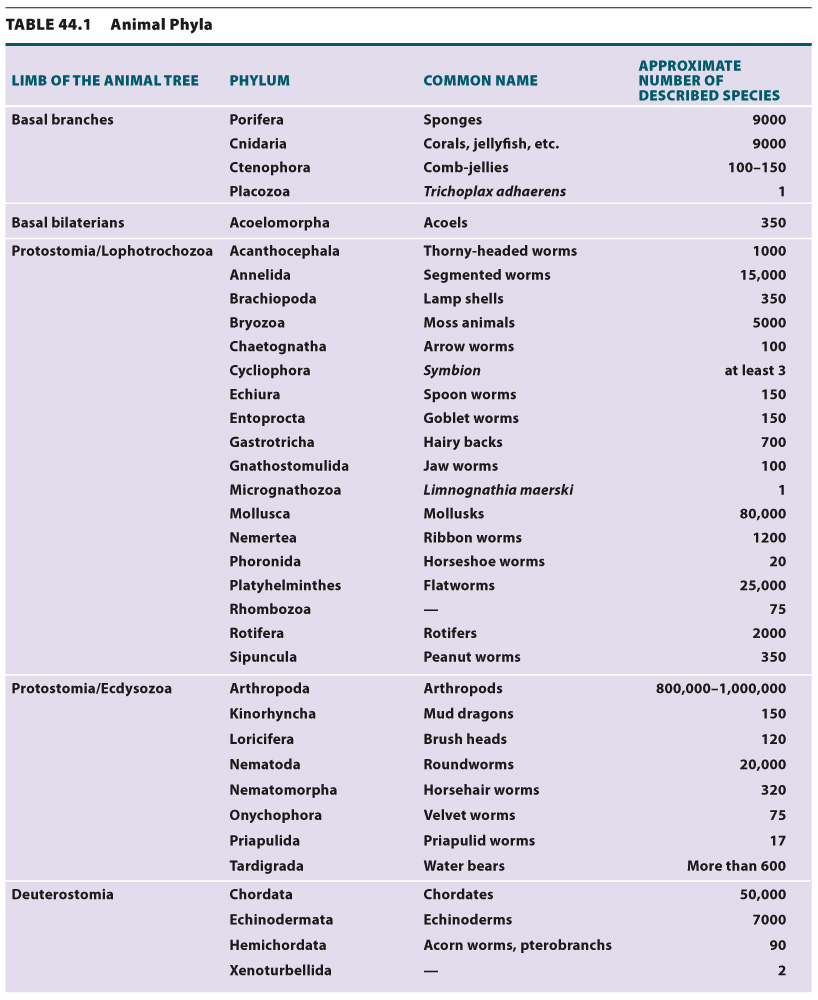Branching relationships among early nodes on the animal tree remain uncertain.

Molecular, anatomical, and embryological data agree that bilaterally symmetrical animals form a monophyletic group whose sister is the radially symmetrical Cnidaria. Increasingly, DNA sequence data place placozoans as sister to the cnidarians and bilaterian animals (Fig. 44.13). This placement suggests that feeding by the absorption of organic molecules evolved before gut cavities specialized for this function.
Where to place ctenophores in this tree is less clear. One recent hypothesis, based on DNA sequence comparisons, suggests rather surprisingly that ctenophores are the sister group to all other animals. If this hypothesis is correct, it means either that the complexity of ctenophores evolved independently of that found in eumetazoans or that the morphological simplicity of living sponges reflects loss of features retained in other animals. Other data, however, favor the more traditional placement of ctenophores as eumetazoans. DNA sequence data indicate that wherever ctenophores belong on the animal tree of life, their nervous system evolved independently of those found in cnidarians and bilaterian animals. At present, we simply don’t know the correct branching order of the animal tree, although there is reason to believe that the earliest animals were much like present-
Fig. 44.13 shows one current view of the phylogenetic relationships among animals, with placozoans as the sister group to cnidarians and bilaterians, and uncertainty in the branching order of sponges and ctenophores. We use this tree to guide further discussion, but it should be regarded as a set of hypotheses to be tested against new data rather than an unambiguously “correct” tree. See also Table 44.1 for a list of all currently recognized animal phyla.
